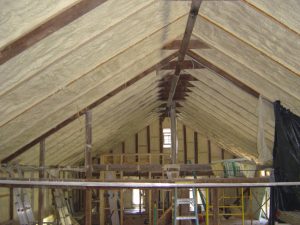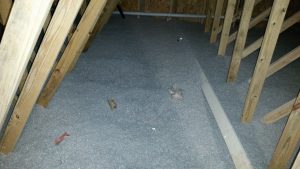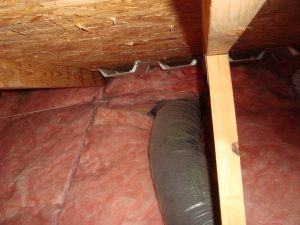How Much Insulation Should You Have in Your Attic?
There are three main types of attic insulation: fiberglass, cellulose, and foam. In new construction we almost always specify open-cell spray foam insulation. It creates an air-tight envelope for the top of your home. So how much should you install? Since it is air tight, R-38 performs really well to achieve a high performance home. According to Ken Wells from Elite Insulation, “R-38 is the code required minimum, but in certain circumstances less open cell foam can still be very effective.”

Cellulose insulation is another option.
The advantage is cellulose offers thermal mass that absorbs heat in the day and releases heat back out at night. Some might see this as a disadvantage in hot months as the house will not cool down overnight as much. However, the insulation does not air seal the attic from the conditioned space. Everywhere you have a “hole” in the drywall (recessed can lights, attic access, electrical wires…) there is a high potential for air leaks. With cellulose you will want more insulation than you would use with foam – R-49 which is the code minimum in most states across the country.

Fiberglass insulation is the last option on the list.
This insulation does not offer the advantages of thermal mass and it is not air-tight. When used in the attic, there should not be any duct work above the insulation. I would recommend R-72 to provide adequate insulation value in the attic. When it is used, you have to make sure to have complete coverage of the attic space.

So when possible, use spray foam insulation. When you have to settle for another type of insulation, look at cellulose.
